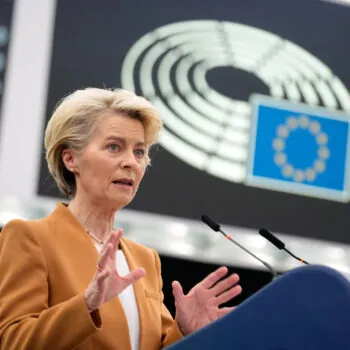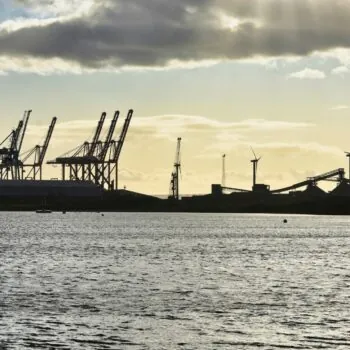European ministers responsible for trade, economy and industry are meeting this week in Brussels. Industrial policy, growth and competitiveness will be on the agenda. This time, will they be able to deliver an EU-wide industrial strategy that really deals with the climate emergency and delivers a digital Europe?
Incoming Commission President Ursula Von der Leyen has made a firm commitment to ‘update’ the EU’s industrial policy, pledging to strengthen the European economy and boost its competitiveness. But every single Commission President before her has done the same – the EU has had a new industrial strategy practically every two years.[1]
This time the stakes are even higher than before. We are in a climate crisis. Other countries are overtaking the EU in low carbon manufacturing and in digitalisation. There are trade wars looming in the background. The window of opportunity for the EU to stay ahead of the game is rapidly closing.
As ministers meet to define priorities for the incoming Commission in this area, they should be thinking: what industrial strategy do we need, and how can we make sure this industrial strategy sticks?
Developing and delivering an EU industrial strategy that is ‘fit for purpose’ will at a minimum require both a strong vision and a governance structure to deliver that vision. Von der Leyen has made a good start on both of these fronts in recent weeks, but there is still a lot that could go wrong.
A bold vision for a climate-neutral industrial strategy
In the past, the debate on industrial strategy has been insufficiently linked up to action on climate change. This was a massive oversight. Not only does heavy-industry account for 14% of EU emissions[2] but it will be a critical player in a net-zero economy and is itself at risk from worsening climate impacts. A successful industrial policy could be a determining factor in whether Europe is able to rapidly shift to a net-zero economy.
President Von der Leyen seems to have recognised this. In her mission letter to Commissioner-designate Sylvie Goulard, a former French defence minister who has been given the internal market portfolio, she has asked her to ensure that, as part of the new industrial strategy, all parts of European industry contribute fully to the objective of a climate neutral economy by 2050. With this letter she has set the tone for an ambitious zero carbon industrial strategy.
A new governance structure to deliver that vision
In addition to Goulard’s mandate to deliver a new industrial strategy, Von der Leyen has designated Executive VPs Margrethe Vestager and Valdis Dombrovskis as co-leads on the strategy. By linking it to competition and digital policies via Vestager and to finance and trade via Dombrovskis she has signalled that action on industry must be integrated with action on digitalisation, international competition and sustainable finance.
This approach, of embedding industrial policy across different Commissioner portfolios, is mirrored throughout the new Commission, with clusters of departments working on key priorities from a European Green Deal to digitalisation. Von der Leyen should be applauded for wanting to break down silos in support of an overarching goal of making Europe the first climate neutral continent. It is striking also for the delicate balance she has achieved across gender, geography, party-affiliation and portfolios.
But risks remain…
The disadvantage of this complex, multi-tiered system is that it is unclear who is really in charge of what. This will be particularly tricky in the case of industrial policy. Although Goulard and Vestager are from the same political group, they have very different political influences and may be pulled in opposing directions. Vestager is likely to continue broadly with the liberal principles that have been the hallmarks of her first tenure as competition chief. Goulard may be more influenced by the French interventionist stance. The current structure could be setting them up for a collision on industrial strategy and digitalisation.
Another oddity of this new structure is the fact that industrial strategy sits outside the European Green Deal. Industrial policy does not feature in Executive VP Timmerman’s mission letter, even though he is the Commissioner responsible for the implementation of the European Green Deal. He is also in charge of a number of other priorities – from Just Transition to carbon border taxes – that would ideally be part and parcel of any comprehensive industrial strategy. It remains unclear how these two major political priorities will be aligned.
Climate ambition also features less strongly in Goulard’s, Vestager’s and Dombrovskis’ mission letters than do concerns about the competitiveness of European industry. This speaks to a broader dichotomy setting up ‘competitiveness’ in opposition to ‘climate action’ that features heavily in Commission and Council communications. Opportunities from shifting towards a climate-neutral economy are always set against the need to take competitiveness into account.
This approach has also compromised past EU industrial strategies causing them to try to solve the wrong problems: such as shielding industry from carbon price signals from the EU ETS, or trying to improve competitiveness by letting businesses cut compliance costs through deregulation policies.
To be successful, the new industrial strategy needs to reject this false dichotomy outright. We cannot have a competitive EU industry that isn’t taking full advantage of the opportunities afforded by low-carbon, low-resource manufacturing, just as we cannot have one that isn’t digital. It will also need to deploy the right set of instruments to stimulate innovation, public engagement and just transition, without being hamstrung by arbitrary rules like ‘one in, one out.’
Without going all-out for low-carbon now, the EU will be lagging behind those countries that embrace the possibilities of re-engineering their industry, and redesigning products and processes to meet today’s needs.
This piece draws on the Race to Decarbonise Industry report published in July 2019.




